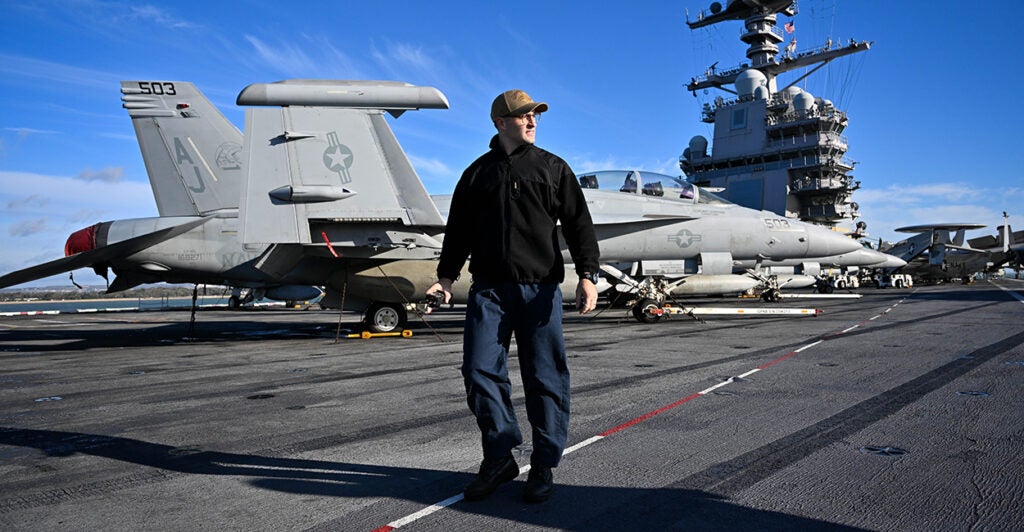Larger aircraft carriers of the Gerald R. Ford class are one of the Navy’s top acquisition projects because their role is central to America’s naval operations.
These 1,092-foot-long, 134-foot-wide, 100,000-ton vessels are designed to reach speeds upward of 30 mph and are critical to mounting the nation’s fight against adversaries—especially in the Indo-Pacific—and maintaining freedom of the seas.
Ford-class carriers can accommodate over 4,660 sailors and an aviation unit of over 75 aircraft. They carry the latest naval technologies, which promise advances in propulsion, power generation, and aircraft launches. And they’re designed to require less maintenance, saving an estimated $4 billion per ship in support costs compared to the preceding Nimitz-class vessels.
In March, the Office of the Chief of Naval Operations released a report to Congress outlining its long-range plan for ship construction. It calls for a fleet of 381 manned ships by fiscal year 2042, including 12 aircraft carriers in the Ford class.
The first vessel of this class and also named after the 38th president, USS Gerald R. Ford (CVN-78), was commissioned in 2017.
The next one, USS John F. Kennedy (CVN-79) is expected to be fully operational in 2025. Two others, USS Enterprise (CVN-80) and USS Doris Miller (CVN-81) are under construction and expected to be delivered in 2029 and 2032, respectively.
Huntington Ingalls Industries Inc., considered the largest builder of military ships in America, is constructing the USS Kennedy at its Newport News Shipbuilding division in Virginia, the nation’s only designer, builder, and refueler of nuclear-powered aircraft carriers.
Huntington Ingalls also is the largest employer in Virginia, with 25,000 employees and average annual revenue topping $6.7 billion.
The condition of shipyards in Newport News, therefore, is critical from an economic standpoint not only to the nation but to Virginia specifically. Unfortunately, the shipyards are plagued with inefficiencies and delays, labor shortages and supply chain issues, poor management, and an even poorer sense of urgency.
The USS Kennedy is already a year behind schedule; USS Enterprise is a year and a half behind. USS Miller is likely to fall behind as well.
Further delays, according to a survey conducted by the Aircraft Carrier Industrial Base Coalition, which represents shipbuilding suppliers, potentially would require builders to “lay off workers and/or deprioritize military shipbuilding.” Better planning, improved timeline management, and more intense scrutiny need to be implemented to minimize delays.
In other words, a sense of urgency and proper prioritization are required.
But that seems to be missing from the Biden-Harris Defense Department’s current approach.
These aircraft carriers are critical to America’s posture and defense budget as we face national security challenges across the globe. The shipbuilding being done in Virginia is as critical to national security as it is to the local economy.
